The Wonders of Optical Illusions
Can we trust our eyes? Discover four optical illusions that we encounter every day!
WARNING: This article contains flashing images and animations that may potentially trigger seizures in people with photosensitive epilepsy. Reader discretion is advised. If you are sensitive to flashing lights or moving patterns, please exercise caution while viewing this content.
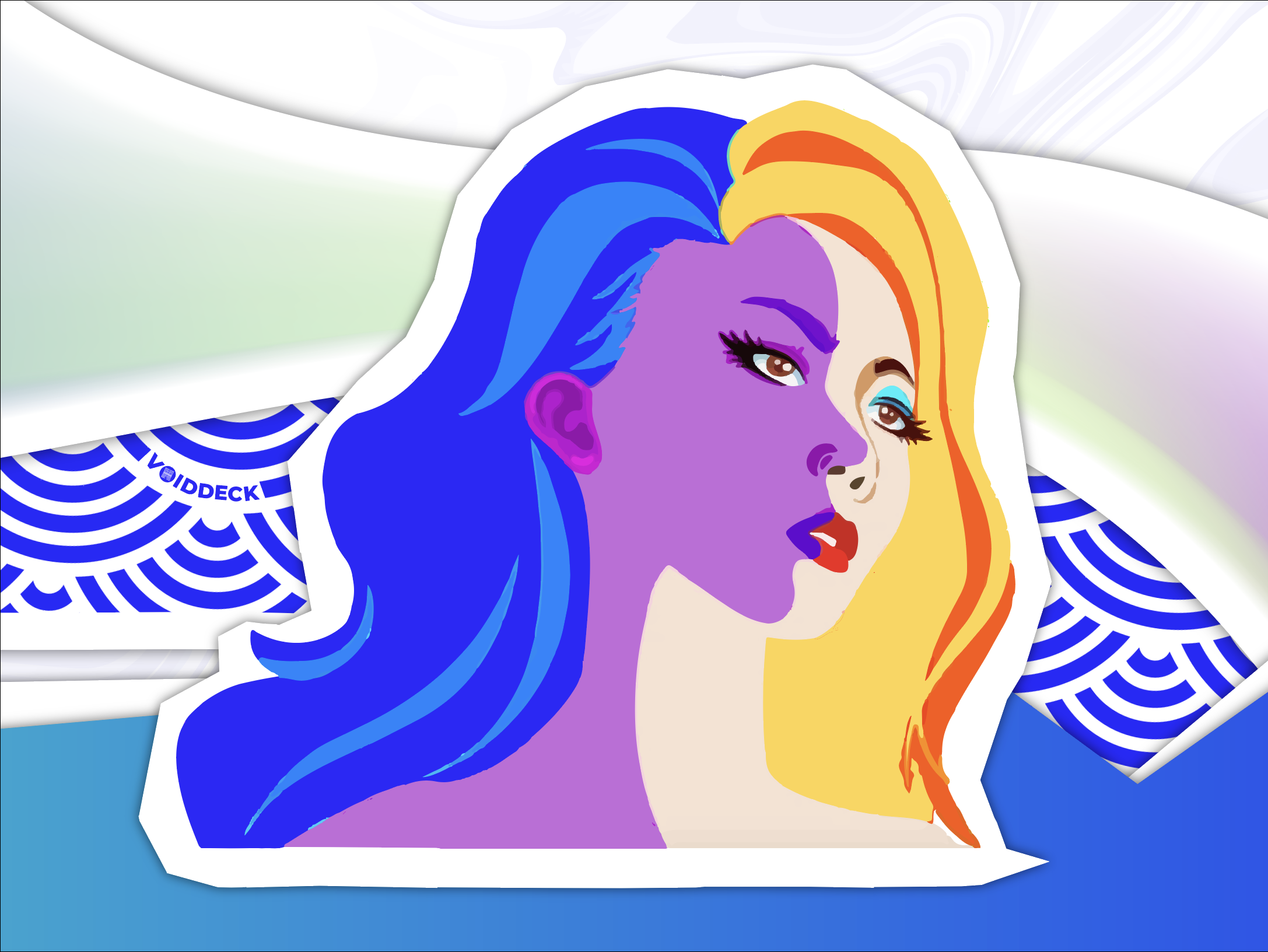
Stepping into Science Centre Singapore, you are immediately greeted with The Mind's Eye, one of our staple exhibits. Even as a kid, I could vividly remember the wall of Albert Einstein Hollow-Face Illusions, staring into my soul.
Now as an adult, optical illusions continue to amaze and boggle me, but the science behind them has always escaped me. There are many kinds of optical illusions, but I have chosen to break down four everyday illusions that we experience in our everyday lives.
1. The Dress
We all remember The Dress. A widely circulated photo of a seemingly plain looking dress, that ended up sparking fierce online debates – is the dress white and gold or black and blue?
It became such a viral phenomenon and internet meme there’s even a substantial Wikipedia page about it. Unfortunately, five years after upending the field, vision scientists still lack a full scientific consensus on how this happened.
The main theory is that the photo is contextually ambiguous – there are hardly any clues about if it was taken indoors or outdoors, and whether the dress is backlit or frontlit. These are actually important cues for our vision – without them, our brains are forced to make sense of what we see by making assumptions.
If we assume the photo to be taken in natural light or the dress as being in the shadow, we’d be more inclined to see the photo as white and gold as our brains automatically discount the blue light of daylight or shadows. Discounting the gold light would result in seeing it as black and blue, which is the actual colour of the dress.
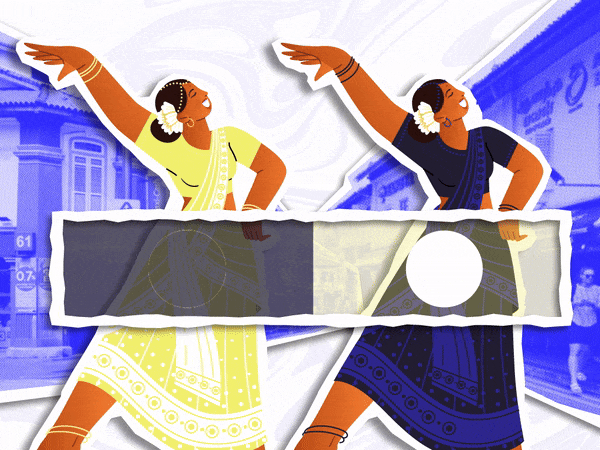
The image processing part of our brain relies heavily on its context.
2. Moving Images
Stare at a moving escalator for too long and you’ll likely experience the motion aftereffect. This moving illusion can be seen after staring at a moving visual for some time, and shifting your attention to a stationary visual. The stationary visual seems to be moving in the opposite direction from the moving visual.
This effect demonstrates our brain’s capacity for motion adaptation.
One theory is that the neurons in the brain involved in processing moving images become fatigued from the constant moving image, and unable to balance the sudden change when we look away, causing other neurons to falsely signal motion in the other direction.
Try staring at the spiral for about 20 seconds, and then stare at the dots.
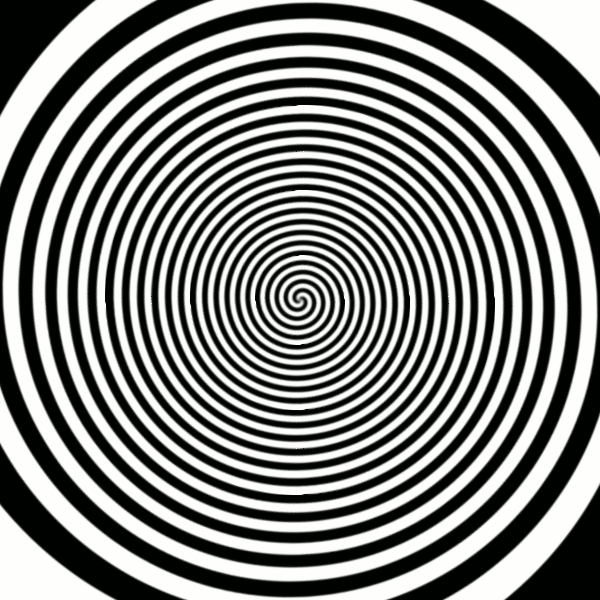
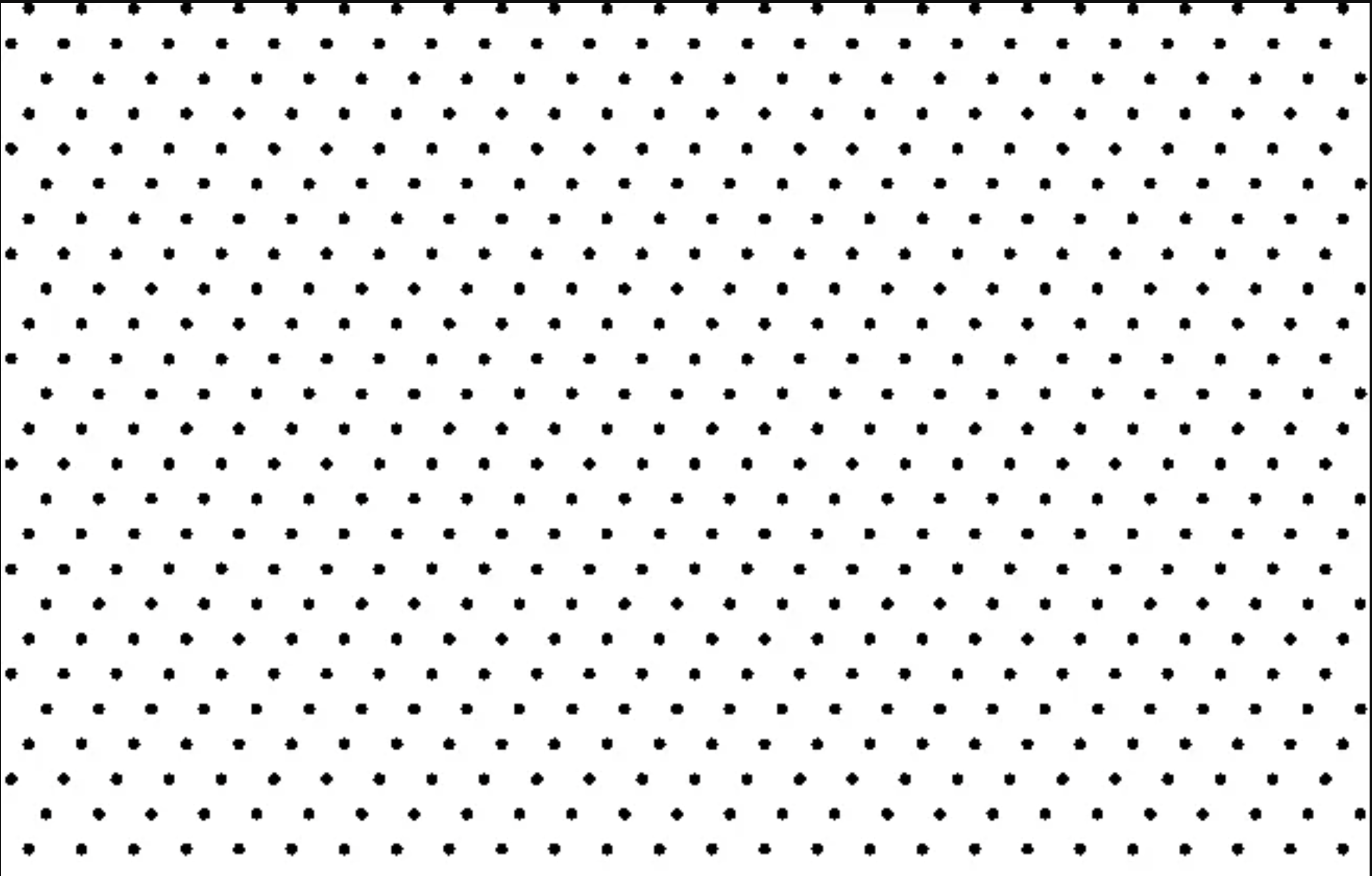
Motion aftereffect gif and dot pattern credit: The Illusions Index
3. Sydney Opera House Illusion
The next illusion is a fun one. To witness the Sydney Opera House Illusion, look out the window of the room you’re in and focus your eyes on a faraway building. As you step further and further away from the window, you will observe the object (represented here by the iconic Merlion!) appearing to grow larger and larger in size.

As the distant building grows to take up the whole frame of the window, it starts to look freakishly large. This works as our brains tend to use surrounding objects as a reference frame, and greatly influences our perception of objects.
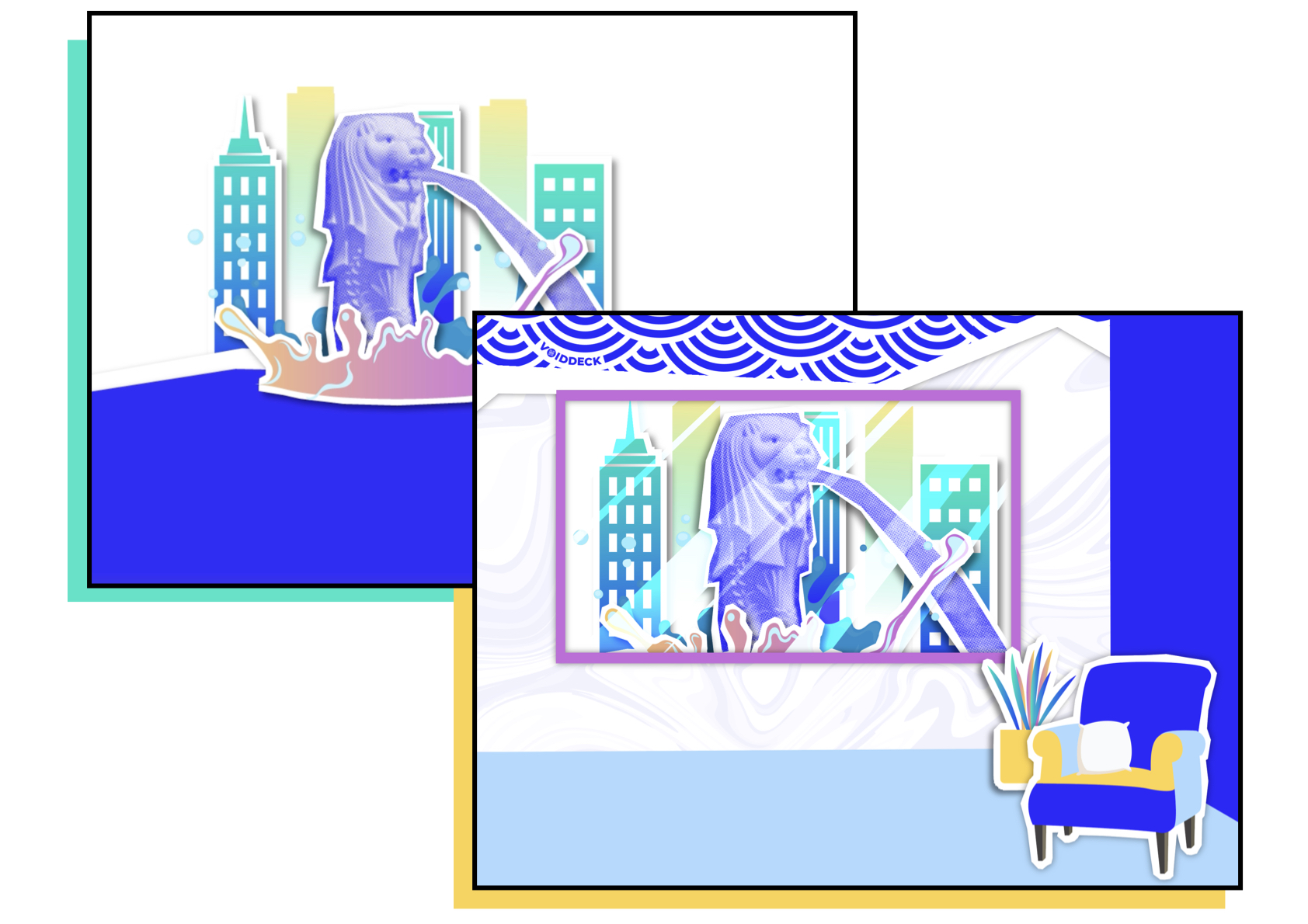
Examples of relative size illusions like these are common. When the moon hangs low in the horizon, it looks huge next to the surrounding buildings. Yet, when it is up high, the moon appears tiny in the large expanse of dark sky. Instead of providing regular sized plates, buffet restaurants tend to provide smaller plates, as a way of tricking patrons into feeling fuller faster with less food.
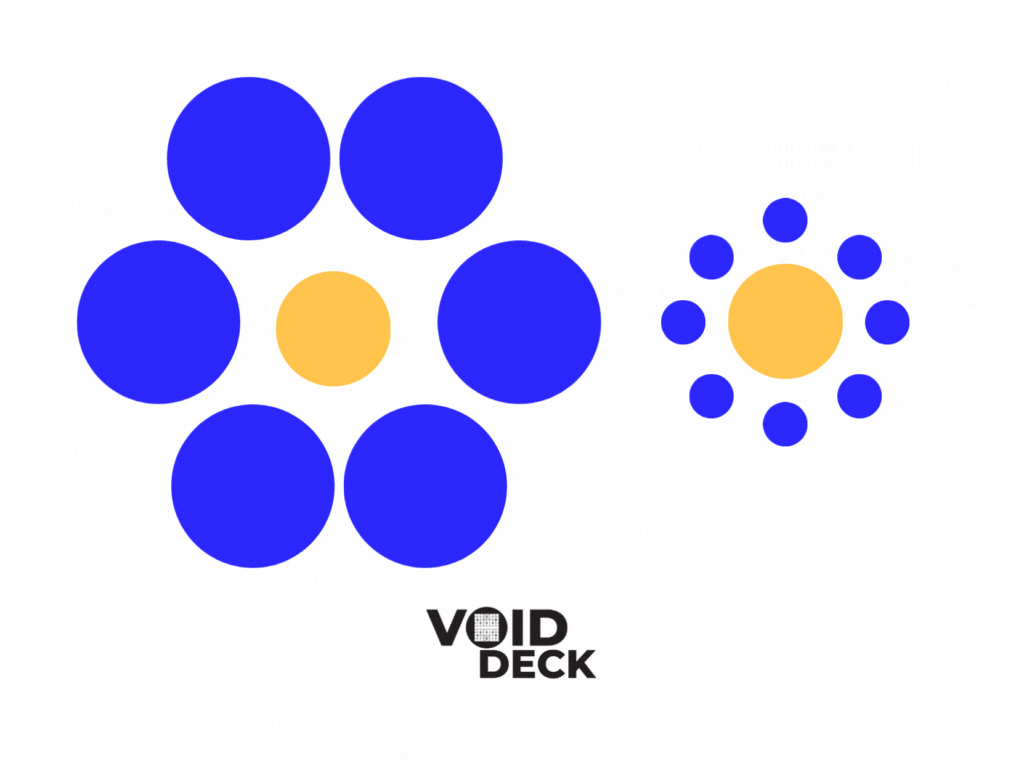
A gif demonstrating the Ebbinghaus illusion. Created in Canva by Jamie Uy.
What’s curious about illusions like these (Ebbinghaus illusions) is that we are not born to be fooled by them. A 2010 study found that children under the age of 10 are less permeable to its effect, and it is believed that we grow more context sensitive over time.
4. Looking into another dimension
You might not have heard of an autostereogram, but you’ve most likely tried out a Magic Eye picture illusion. Our eyes can perceive 3D shapes within these flat pictures because of their incredible ability to line up two images to interpret depth.
Can you see the shapes in the Magic Eye picture below?
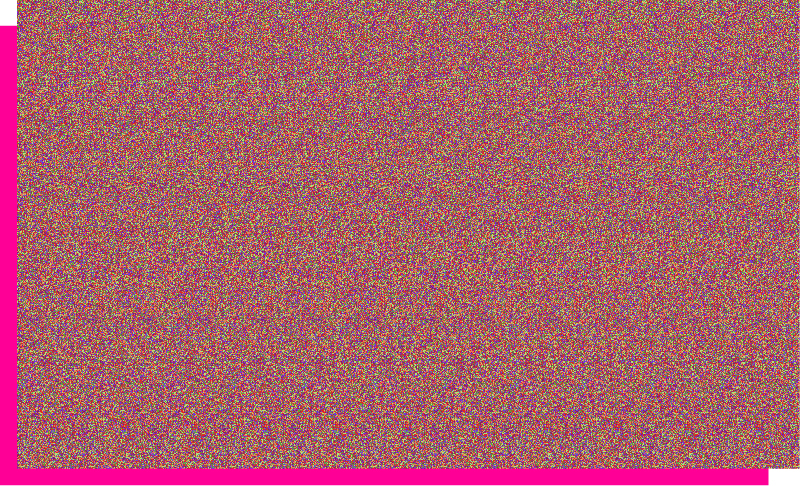
Image credit: MagicEye.js by Ian Pearce/Fork on Github
One way that our brain perceives depth is through our binocular vision, using the two similar but slightly different visuals from both eyes. This is known as stereopsis. The differences in angles between the two visuals give away their depth – objects closer to us look very different to our left and right eyes, while far away objects look almost identical.
Autostereograms appear to be a regular repeating pattern at first glance, but the repeating elements actually have slightly different distances between them. Our brains have difficulty lining up patterns when they are repeated horizontally, and you can trick your brain into lining up the patterns by ‘looking behind’ it. The difference in distances allows your brain to perceive various depths, causing these elements to ‘jump out’ of the image.
This is also how 3D movies and Virtual Reality (VR) are perceived by our eyes from 2D images! Magic eye pictures are so-called autostereograms, as they do not require the use of stereoscopes like 3D glasses or a VR headset.
Not everyone is able to see it – if you can’t, try decoding the hidden shapes with magiceye.ecksdee.co.uk.
Optical illusions are also seen as a form of art, and it’s not difficult to see why it is so. Competitions are held for such visual artists of all mediums, and one of my favourites is Dain Yoon, an immaculate makeup artist and painter.
Finally, my fascination with optical illusions is strongly tied to what I think they teach us.
Through revealing the blind spots of our body, optical illusions teach us about our body’s weaknesses. I love that it humbles us, knowing that there is still much to uncover about one of our key senses! Illusions also remind us to be empathetic, as everything we see (literally and metaphorically) is a matter of perception, and that we all look through a biased lens.
UNTAME 2024: MORE THAN MEETS THE MIND
OCTOBER – DECEMBER 2024
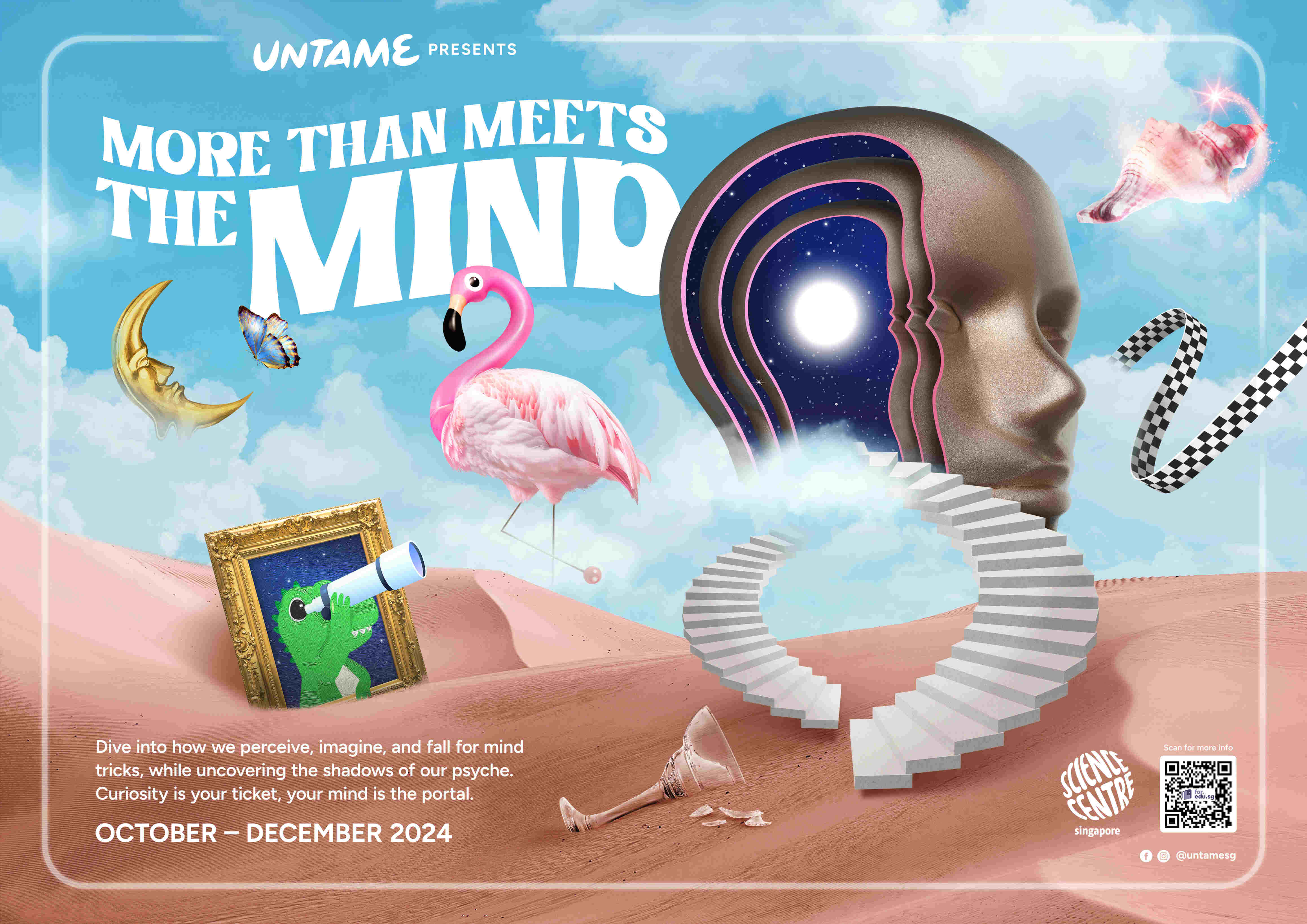
Join us at Science Centre Singapore as we embark on a journey into the mind to uncover the fascinating and often times strange ways we feel, think, and make sense of the world around us. Explore a curious inner world where your perception can play tricks on you, your subconscious can influence your state of mind, and for the bold at heart, even sneak a daring peek into the darker shadows of the human psyche.
Visit the Science Centre Singapore website to buy tickets to immersive installations and interactive science experiences showing that there's More Than Meets the Mind.
Written by Kow Zi Shan
Edited by Jamie Uy
Originally illustrated by Chua Jia Qi
New illustrations by Jansen Michelle
This article was originally published in Science Centre Singapore's previous blog, I Saw the Science, on 22 April 2021. The article has been republished with new graphics and lightly edited for Void Deck.
Last updated: 1 November 2024

